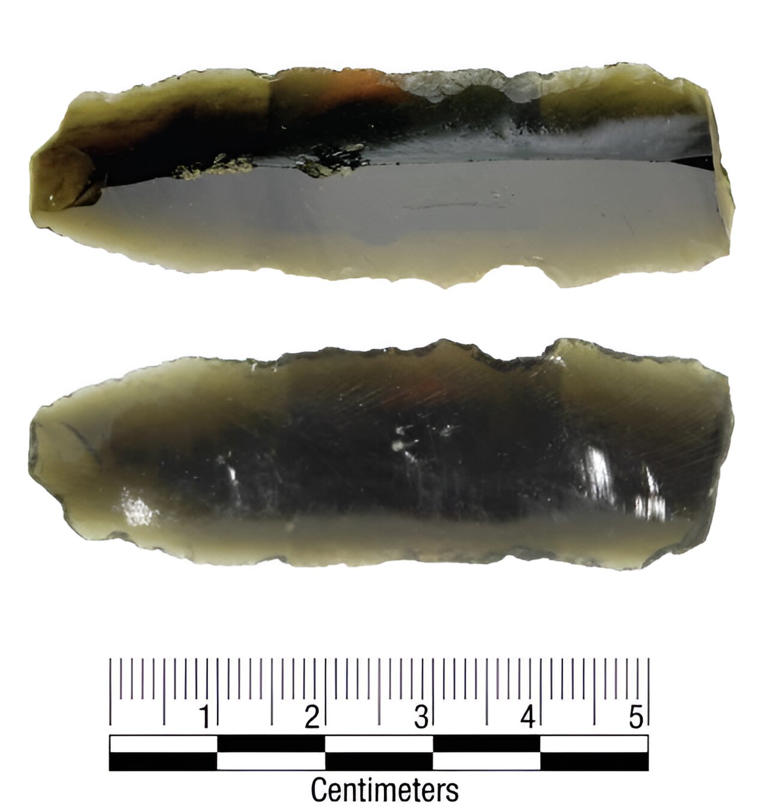In the vast expanse of the Texas panhandle, a seemingly inconspicuous artifact has emerged as a window into the past, offering tantalizing clues about one of history’s most intriguing expeditions. This artifact, a small piece of obsidian just over 5 centimeters long, holds within its sleek surface the echoes of Spanish explorer Francisco Vasquez de Coronado’s epic quest for the mythical Seven Cities of Gold over 470 years ago.
Anthropologist Matthew Boulanger, from Southern Methodist University SMU peers into the obsidian’s gleaming facets and envisions Coronado’s entourage traversing the rugged terrain, a journey that spanned vast stretches of what is now Texas, New Mexico, Arizona, Oklahoma, and Kansas. While this flaked-stone tool may appear unassuming, its significance is monumental, potentially illuminating a pivotal moment in history.
Boulanger’s hypothesis is grounded in meticulous analysis, combining archaeological expertise with cutting-edge technology. Through spectrometer examination of the obsidian’s chemical composition, researchers traced its origins to Central Mexico’s Sierra de Pachuca mountain range. This geographical link aligns with historical accounts of indigenous peoples crafting tools from obsidian in the region before the arrival of Spanish conquistadors.
“This small, unassuming artifact fits all of the requirements for convincing evidence of a Coronado presence in the Texas panhandle,” affirms Boulanger. “It is the correct form of artifact, it is fully consistent with other finds, the correct material, found in the correct location, and there are no indications of an intentional hoax.”
The artifact’s discovery offers a poignant reminder of the intertwining narratives of conquest, exploration, and cultural exchange that have shaped the Americas. Coronado’s expedition, launched in the 16th century, epitomizes the relentless quest for discovery and riches that characterized the Age of Exploration. As explorers ventured into uncharted territories, they left behind traces of their presence, tangible remnants that serve as breadcrumbs for contemporary scholars seeking to unravel the mysteries of the past.
Moreover, the artifact underscores the resilience and ingenuity of indigenous peoples, whose craftsmanship and resourcefulness predates the arrival of European settlers. The use of obsidian as a tool reflects ancient traditions of craftsmanship and trade networks that spanned vast distances, highlighting the sophistication of pre-Columbian societies.
In the annals of history, every artifact is a storyteller, whispering tales of bygone eras and forgotten civilizations. The obsidian fragment, once discarded on the windswept plains, now stands as a testament to the enduring allure of exploration and the enduring legacy of those who dared to venture into the unknown.
As researchers continue to unravel the secrets held within this tiny relic, they pave the way for a deeper understanding of our shared human heritage. Each discovery, no matter how modest, brings us one step closer to unlocking the mysteries of the past and weaving together the rich tapestry of human history.
